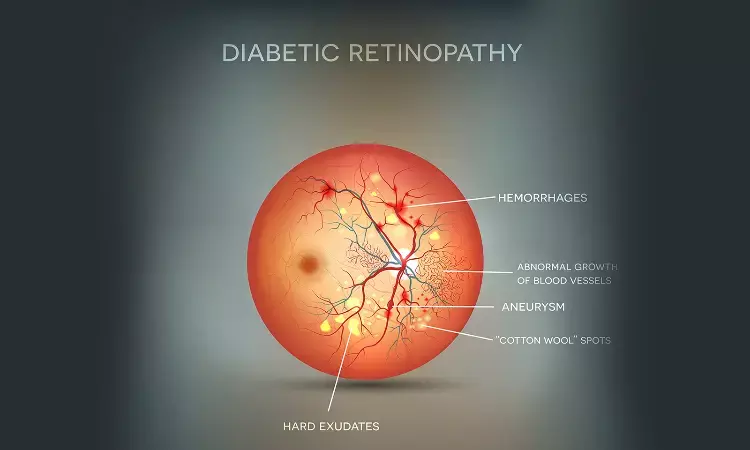- Home
- Medical news & Guidelines
- Anesthesiology
- Cardiology and CTVS
- Critical Care
- Dentistry
- Dermatology
- Diabetes and Endocrinology
- ENT
- Gastroenterology
- Medicine
- Nephrology
- Neurology
- Obstretics-Gynaecology
- Oncology
- Ophthalmology
- Orthopaedics
- Pediatrics-Neonatology
- Psychiatry
- Pulmonology
- Radiology
- Surgery
- Urology
- Laboratory Medicine
- Diet
- Nursing
- Paramedical
- Physiotherapy
- Health news
- Fact Check
- Bone Health Fact Check
- Brain Health Fact Check
- Cancer Related Fact Check
- Child Care Fact Check
- Dental and oral health fact check
- Diabetes and metabolic health fact check
- Diet and Nutrition Fact Check
- Eye and ENT Care Fact Check
- Fitness fact check
- Gut health fact check
- Heart health fact check
- Kidney health fact check
- Medical education fact check
- Men's health fact check
- Respiratory fact check
- Skin and hair care fact check
- Vaccine and Immunization fact check
- Women's health fact check
- AYUSH
- State News
- Andaman and Nicobar Islands
- Andhra Pradesh
- Arunachal Pradesh
- Assam
- Bihar
- Chandigarh
- Chattisgarh
- Dadra and Nagar Haveli
- Daman and Diu
- Delhi
- Goa
- Gujarat
- Haryana
- Himachal Pradesh
- Jammu & Kashmir
- Jharkhand
- Karnataka
- Kerala
- Ladakh
- Lakshadweep
- Madhya Pradesh
- Maharashtra
- Manipur
- Meghalaya
- Mizoram
- Nagaland
- Odisha
- Puducherry
- Punjab
- Rajasthan
- Sikkim
- Tamil Nadu
- Telangana
- Tripura
- Uttar Pradesh
- Uttrakhand
- West Bengal
- Medical Education
- Industry
Early treatment with anti-VEGF injections reduces diabetic retinopathy complications

Early treatment with anti-VEGF injections slowed diabetic retinopathy in a clinical study from the DRCR Retina Network (DRCR.net). However, two years into the four-year study its effect on vision was similar to standard treatment, which usually begins at the onset of late disease. The intermediate findings published today in the JAMA Ophthalmology. The study was supported by the National Eye Institute (NEI), a part of the National Institutes of Health.
"While it is possible that preventive injections of anti-VEGF drugs may help protect vision in the longer-term, we saw no effect on vision at two years," said Raj Maturi, M.D., Indiana University, the protocol chair for the study. "These 2-year results suggest that close monitoring and routine treatment when complications develop are key to preventing vision loss from diabetic retinopathy."
An estimated 30 million Americans have diabetes, which can cause blood vessel abnormalities, including the growth of new blood vessels in the eye, called diabetic retinopathy. In the early stages of diabetic retinopathy, called non-proliferative diabetic retinopathy (NPDR), changes in the eye's blood vessels are visible to clinicians but generally do not affect sight. In the advanced stages, people can develop proliferative diabetic retinopathy (PDR), where retinal blood vessels grow abnormally, and/or diabetic macular edema (DME), where fluid leaks out of the retinal blood vessels. Both can lead to vision loss and blindness. Treatment, such as with anti-VEGF drugs, can slow or prevent vision loss in people with PDR or DME, as long as treatment occurs promptly.
In this study, participants with NPDR were randomly assigned at baseline to receive either injections of Eylea (aflibercept) or a sham injection. They were examined at one, two, and four months, and then every four months for two years, receiving Eylea or sham injection at each visit. The researchers tracked their visual acuity and the severity of their diabetic retinopathy. If disease progressed, regardless of whether they were in the treatment or sham group, participants were given Eylea more frequently as is given in standard practice. If their condition did not improve with additional anti-VEGF treatment, participants could be given treatments such as laser photocoagulation or surgery if necessary.
The study included 328 participants (399 eyes). In two years, the rate of PDR development was 33% in the control group, compared with 14% in the treatment group. Likewise, the rate of development of DME affecting vision was 15% in the control group, compared with 4% in the treatment group. However, loss of visual acuity was essentially the same between the two groups at 2 years, suggesting that standard treatment at the appearance of PDR or DME affecting vision is sufficient to prevent further vision loss at this time point.
"We have a really good treatment for these diseases, so we can manage vision complications that may arise as disease progresses for many eyes," said Adam Glassman, Jaeb Center for Health Research, director of the DRCR.net coordinating center. "When evaluating new preventative treatment strategies, it is important to compare them directly to the standard treatment after disease worsens, as we have done in this study."
"Although we did not see any difference in visual outcomes at two years, the four-year follow-up is going to be very important," said Jennifer Sun, M.D., M.P.H., Joslin Diabetes Center, Harvard Medical School, chair of Diabetes Initiatives for the Network. "We look toward the four-year data to see whether reducing rates of diabetic retinopathy worsening will lead to long-term improvement in visual outcomes."
Hina Zahid Joined Medical Dialogue in 2017 with a passion to work as a Reporter. She coordinates with various national and international journals and association and covers all the stories related to Medical guidelines, Medical Journals, rare medical surgeries as well as all the updates in the medical field. Email: editorial@medicaldialogues.in. Contact no. 011-43720751
Dr Kamal Kant Kohli-MBBS, DTCD- a chest specialist with more than 30 years of practice and a flair for writing clinical articles, Dr Kamal Kant Kohli joined Medical Dialogues as a Chief Editor of Medical News. Besides writing articles, as an editor, he proofreads and verifies all the medical content published on Medical Dialogues including those coming from journals, studies,medical conferences,guidelines etc. Email: drkohli@medicaldialogues.in. Contact no. 011-43720751


